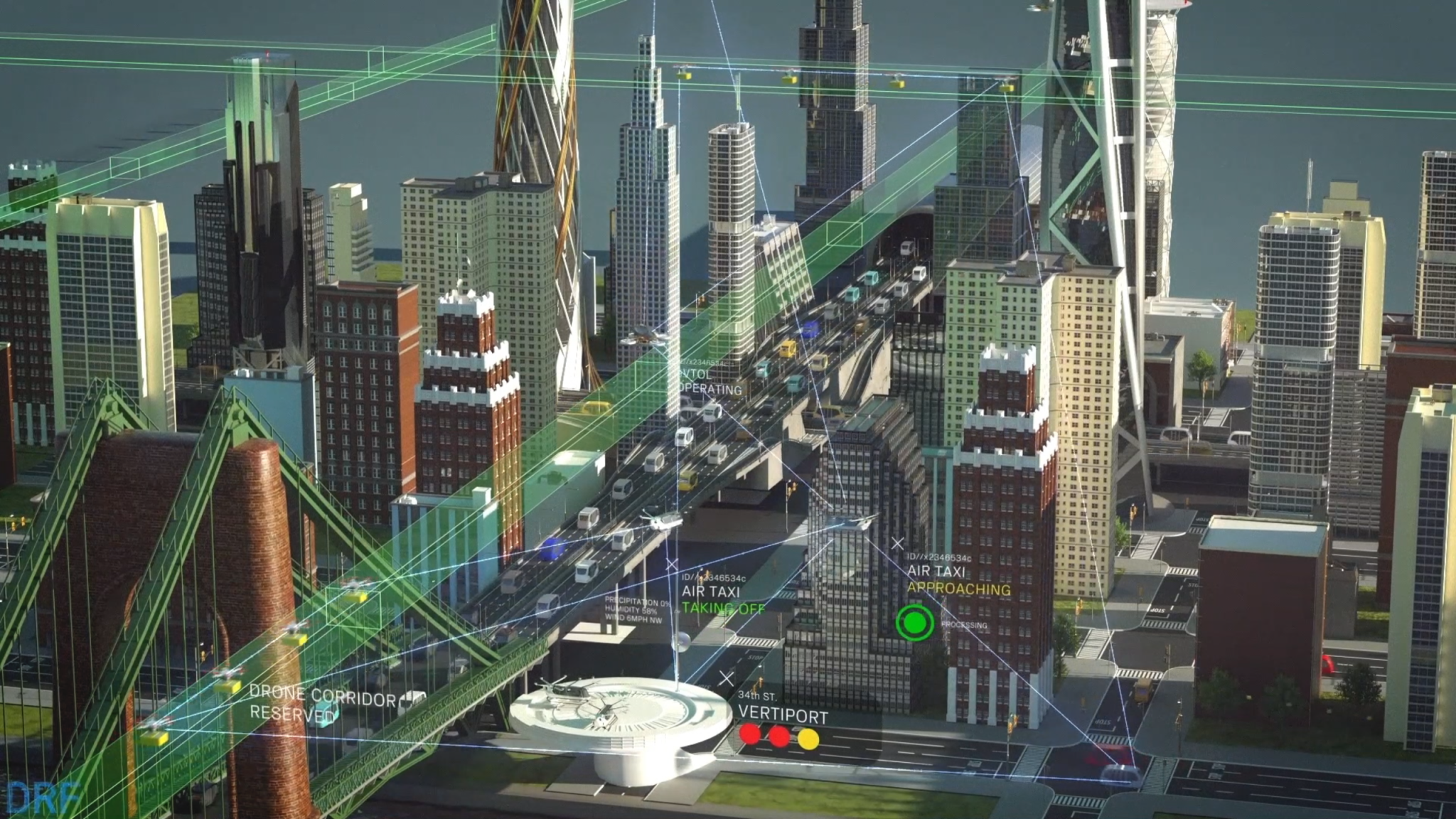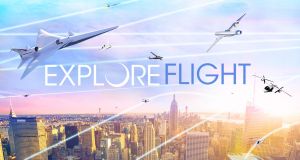
It’s your day off from work and you’d like to get some much-needed sun.
A quick check of your smartphone for the weather at your favorite park tells you it’s currently overcast there, but you see the clouds will blow over in a couple hours. So, you decide to run other errands first and wait for the sun to come out.
You sought information, you gathered it, you determined what it meant, you considered options, and you decided on a course of action. The data was provided to you and you did all the reasoning.
But what if you had a device that gathered the data and did the reasoning for you, alerting you when there is a potential conflict that required your attention? And just for fun, let’s say “you” in this case is a cargo-carrying drone flying on its own across town.
That capability is the general idea behind DRF, or Data and Reasoning Fabric – a brand new NASA activity exploring if it’s possible to create an inventive information infrastructure that can assemble and provide useful information to autonomous vehicles in real time.
Consider this example: In a not-too-distant future, a self-operating drone is in the air, on its way to deliver goods, taxi people across town, or even help locate wildfires.
To safely complete its flight, that drone could rely on this new capability to notify it along its route of important information – such as deteriorating weather conditions – that would prompt it to change its course.
Delivering the Goods
To provide these autonomous aircraft with useful data, NASA’s aeronautical innovators will experiment with what are called edge nodes.
These router-like devices would each be one part of a connected, interwoven “fabric” of computers that sends aircraft specific, tailored information wherever they are. This infrastructure would form what some call a “smart” city.
It’s these edge nodes that contribute a significant part of DRF’s vision: they don’t just communicate data – the nodes themselves are what help make sense of the data. That’s the “reasoning” in Data and Reasoning Fabric.
All on their own, the computerized edge nodes would access data, translate it into useful information, and reason what each drone needs to know. The nearest edge device to a vehicle would send the aircraft information specific to its plans and activities in the smart city.
But how is this data accessed, and where does it come from?
DRF envisions a digital “marketplace” where providers like weather services, mapping and surveying firms, air traffic management, and others can offer their data to aircraft operators via digital agreements. In turn, aircraft operators can also offer the data they have acquired.
For example: a delivery drone receives orders to take a package to an address downtown. It connects to the Data and Reasoning Fabric.
A nearby edge node provides the drone with information from a weather station, a detailed map from city authorities, and the locations of nearby aircraft, all assembled using data from the marketplace agreed to beforehand.
Receiving this information, the drone can understand with its own software that the weather is acceptable, that it should fly above 200 feet to avoid a building, and that it must allow room for an air taxi flying nearby.
The drone also learns that it should avoid a big tree near the landing zone. On a previous delivery, a different drone sent a photo of an unexpected obstacle to one of DRF’s edge nodes. The edge node successfully reasoned from the image that this object is a tree and should be avoided.
If all goes well with executing the DRF activity, drones will have the information they need to take the safest and most efficient course of action with minimal human input, similar to how our devices provide real-time updates while we’re out and about.
Led by Principal Investigator William Van Dalsem and co-Principal Investigator Kenneth Freeman of NASA’s Ames Research Center in California, DRF is the latest activity to address the needs of an Advanced Air Mobility system. DRF’s vision is not exclusive to drones, however. In theory, it could also work for larger aircraft at higher altitudes.
An exploratory activity, DRF is part of the Convergent Aeronautics Solutions project, which is designed to give NASA researchers the resources they need to determine if their ideas to solve some of aviation’s biggest technical challenges are feasible, or worthy of additional pursuit within NASA or by industry.































